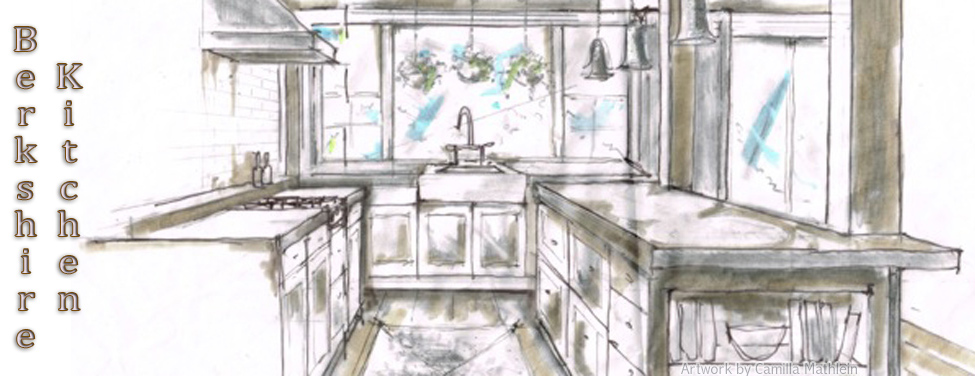Thanksgiving Gravies
Growing up in the 1960’s, having a meal that included gravy was a special event, usually reserved for Sunday dinners and holidays. Thanksgiving is one of the holidays when you can pretty much guarantee there will be gravy on the table. We all bring out our finest china and dig out the vintage gravy boat from the back of the cupboard to showcase our gravy with the elegance it deserves.
There can be a heated debate over gravies at the Thanksgiving table as traditionalists, carnivores, vegetarians and vegans congregate together to give thanks. So here are a couple of recipes that are sure to please (most) of the people at your table: traditional Giblet Gravy made with pan drippings and a Mushroom-Dill Sauce that is sure to make Lacto-Vegetarians smack their lips!
Giblet Gravy
Giblets, heart and neck (from the packet inside the turkey)
Container of giblets
Drippings from your roasted turkey
½ cup flour
Chicken or turkey stock base or bouillon (optional)
Salt & Pepper
-
Remove the packet of “innards” from your turkey before roasting! To make the giblet gravy, I use everything in the packet except for the liver – you can reserve the liver for use in another recipe. Put the giblet, heart and neck into a saucepan, along with the giblets from the container and cover with water. Bring to a boil then reduce the heat and simmer for one hour. Remove any “foam” with a slotted spoon, adding more water while cooking if necessary to keep the meat covered.
-
Remove the meat and let it cool in a bowl. When cool enough to handle, trim and discard the center sections from the gizzards and chop the lobes into small cubes. You can dice the heart and meat from the neck if you would like to add these to the gravy, or reserve for use in turkey soup after the holiday. Reserve the cooking water/stock. The recipe should be prepared to this point while your turkey is roasting.
-
When your turkey is done roasting, pour all of the pan drippings into a container and set it in the fridge. As it chills, the fat will rise to the top and be easy to spoon off, leaving the gelled drippings for use in the gravy.* Reserve 1 cup of the fat and all of the gelled drippings.
-
In a medium saucepan, melt 1 cup of fat. Sprinkle the flour onto the fat and whisk it to form a paste. Cook the paste over very low heat, stirring constantly, to make a roux. This will be the most time-consuming part of the process, but the most important. Cook the roux until it is a deep golden brown, and be extremely careful to not let the roux burn. Cooking it slowly will remove the “raw flour” flavor and will result in a delicious full-flavored gravy. Slowly whisk in 1 cup of the meat drippings, and let the gravy cook on low heat for an additional 10 minutes.
-
Taste the gravy, adding a little salt and pepper if necessary. If your gravy is too thick, add some more pan drippings or a little reserved stock. If your reserved stock is a bit weak, first add some stock base or bullion, whisking well to incorporate.
-
Add in as much of the chopped giblets to your gravy as you like. Some prefer a smoother gravy with just a few giblets, others like a chunky gravy full of giblet bits.
Mushroom-Dill Sauce
Olive oil
12 ounces sliced mushrooms
1 shallot, minced
3 tablespoons Cognac
1 cup broth (vegetable, or a meat-based broth such as turkey)
1 teaspoon Dijon mustard
3 tablespoons sour cream
2 teaspoons chopped fresh dill
-
In a little olive oil, sauté the mushrooms and shallot over low heat until soft and golden. Remove pan from the heat and deglaze with the Cognac, stirring well to incorporate all the delicious browned bits (fond) from the pan.
-
Add the broth and simmer for 3 minutes. The sauce can be prepared in advance up to this point.
-
When ready to serve, remove the mushrooms to a bowl and set aside.
-
To the saucepan, add the mustard and sour cream and stir well to combine. Return the mushrooms to the pan and stir in the chopped dill. Gently reheat until just warm – be careful to not overheat or the sour cream may separate. If the sauce seems a bit too thick you may add some water or a little additional Cognac.
This sauce tastes delicious on vegetables and also on fish or on meats such as turkey or pork.
* If you plan to make your own gravies often, here is an ingenious time-saving trick: Pour all of the roasted meat’s pan drippings into a covered jar, such as a large canning jar. Close the top securely. Put the jar into the fridge – upside down. As the drippings cool, the gelled meat drippings will accumulate near the lid, whereas the fat will accumulate toward the “bottom” of the jar. You might want to set the jar into a bowl – just in case it leaks! When you’re ready to use, open the jar and remove the gelled meat drippings to make gravy, and save the fat for use in cooking – just like you would use bacon grease.

